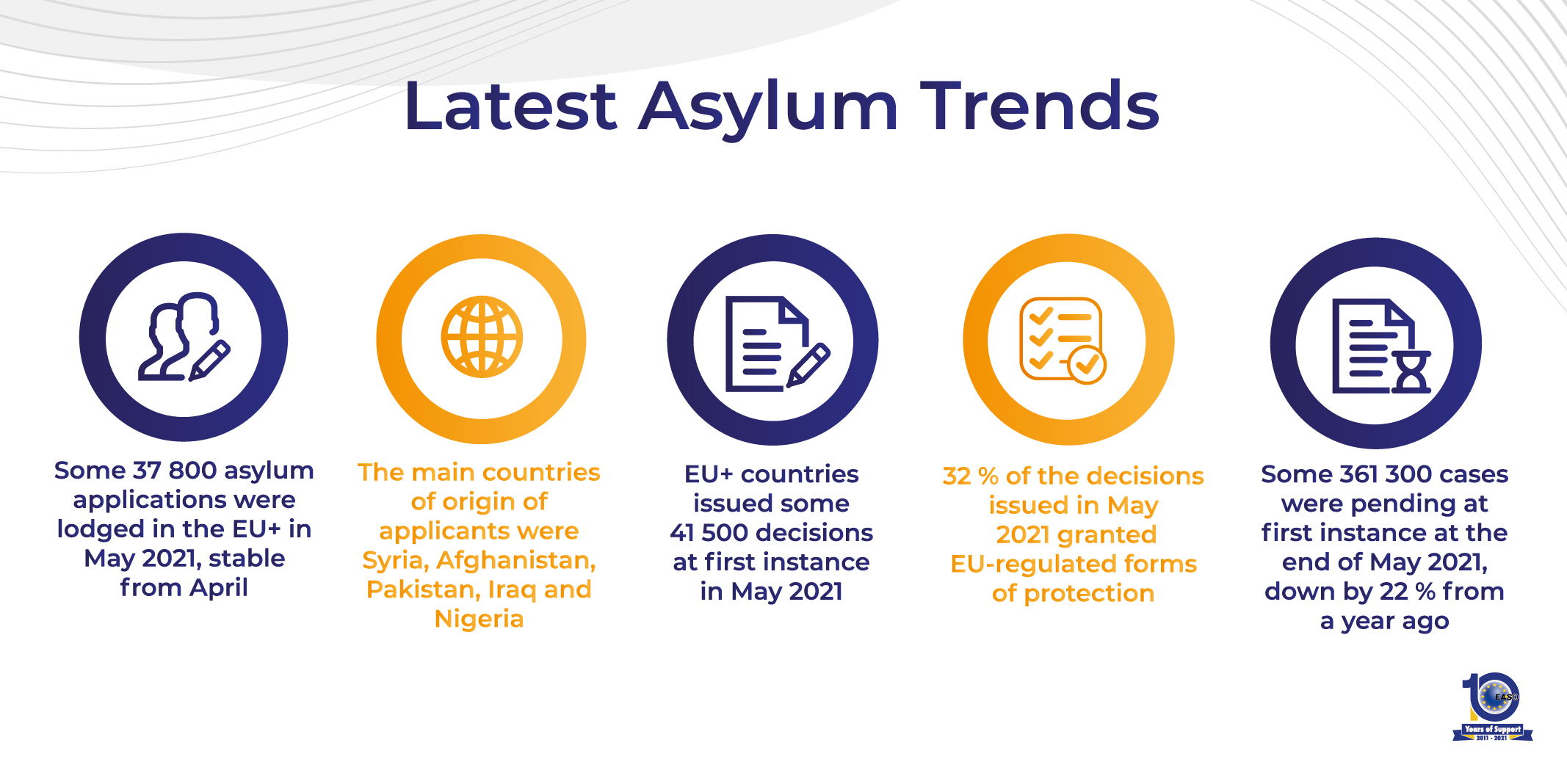News
News Published: 22 July 2021
Many arrivals from the Maghreb but few asylum applications

Nationals of Morocco, Tunisia and Algeria have lodged surprisingly few asylum applications over the past year, based on the number of illegal border-crossings that were detected for these nationalities. In contrast, applications by West Africans were again high in May.
Analysis released by the European Asylum Support Office (EASO) shows that about 37 800 applications for international protection were lodged in the EU+ in May 2021.1 This number was close to the relatively low level in April (+ 3 %).
The top origin countries in May were Syria, Afghanistan, Pakistan, Iraq and Nigeria. Afghans lodged more applications for the third consecutive month (5 100 in May, + 33 % since February 2021). With 900 applications in May, Georgia joined the 10 main origin countries for the first time in over a year.

Discrepancy between asylum applications and illegal border-crossings
Nationals of Morocco, Tunisia and Algeria have been the most prominent after Syrians in terms of illegal border-crossings detected at the external EU border over the past 12 months.2 However, they surprisingly lodged fewer asylum applications during the same period than the number of detected illegal border-crossings. In contrast, asylum applications were higher than illegal border-crossings for all other main origin countries. This suggests that many Moroccans, Tunisians and Algerians who entered the EU+ illegally have chosen not to apply for asylum, possibly due to the low recognition rates for these nationalities.
Applications by West Africans back to peak value
West Africans3 lodged 5 500 applications in May, returning to the peak value of March 2021. While Nigerians (1 300) remained by far the largest group among West Africans, the increase was largely due to Senegalese (800, + 31 % from April). Ghanaians (200) lodged the most applications in more than a year and Malians (900) remained one of the 10 main nationalities, alongside Nigerians. The relatively high number of asylum applications by West Africans partly reflects increased irregular migration on the Western African route towards the Canary Islands.
As in April, self-claimed unaccompanied minors lodged 1 500 applications in the EU+ in May 2021. They represented 4 % of the total applications in May. Similar to previous months, more than two fifths were from Afghanistan. Bangladeshis have become the third largest group, after Afghans and Syrians.
Substantial decrease in decisions issued by EU+ asylum authorities
EU+ asylum authorities issued some 41 500 first instance decisions in May. This was substantially lower than in April (- 17 %) as far fewer decisions were issued on repeated applications, which had been numerous in recent months. Despite the decline, first instance decisions still exceeded applications. At the end of May 2021, about 361 300 cases were still pending at first instance. Similarly low levels of the backlog at first instance last occurred in 2014.
The recognition rate4 in the EU+ returned to 32 % in May 2021. In March and April, it had been only 27 % because high numbers of first instance decisions on repeated applications were rarely positive. In May, recognition rates were especially high for Eritreans (80 %), Syrians (75 %) and Somalis (59 %).
For more information and an interactive data visualisation, please visit the Latest Asylum Trends page.
Any further information may be obtained from the European Asylum Support Office on the following email address: press@easo.europa.eu
Notes
____
[1] EASO EPS data are preliminary and might differ from validated official statistics submitted to Eurostat at a later stage. Eurostat data are used in the annual EASO Asylum Report. The total EPS numbers exclude missing data for one EU+ country.
[2] Frontex, Detections of illegal border-crossings statistics, last updated 2 July 2021.
[3] According to the United Nations Population Division, West Africa includes the following countries: Benin, Burkina Faso, Cape Verde, Côte d'Ivoire, Gambia, Ghana, Guinea, Guinea-Bissau, Liberia, Mali, Mauritania, Niger, Nigeria, Senegal, Sierra Leone and Togo.
[4] This refers to the recognition rate for EU-regulated types of protection (refugee status and subsidiary protection) at first instance.

